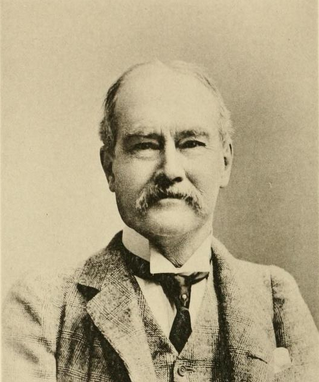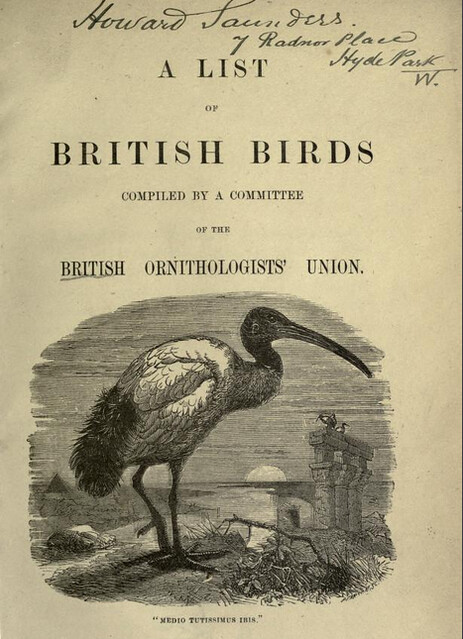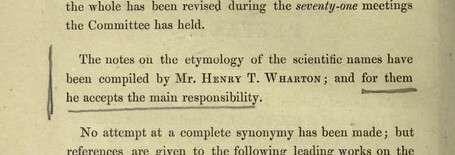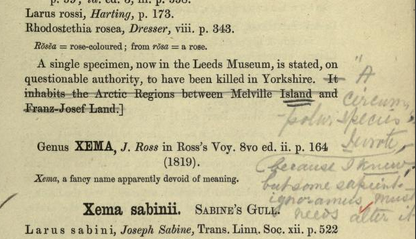Howard Saunders was a big name indeed in British ornithology in the late nineteenth century. Co-editor of the Ibis, editorial executor of the last two volumes of Yarrell, and the author of any number of still useful papers, Saunders was a particular expert on the larids, one especially lovely species of which still bears his name.
In the late 1870s and early ’80s, Saunders was a member of the BOU group charged with assembling an official list of British birds “in accordance with the most approved principles of modern nomenclature.”
His own copy of the list, which was published in 1883, now resides in the library of the University of California at Davis, and the annotations reveal a man not always satisfied with the results of committee work.
Among Saunders’s co-authors, Henry T. Wharton, responsible for, among other things, the book’s etymologies, comes in for some particularly withering criticism.
Saunders honestly (and often rightly) disagrees with some of the derivations offered here, but he seems to have had a more fundamental objection to the whole enterprise, writing at one point, when Wharton has gone on a bit too long,
Is this a Latin Dictionary?
At times, Saunders reproaches Wharton for being too tentative. Where Wharton derives the epithet curruca “perhaps” from curro, “I run,” Saunders writes in bold pencil that
Curruca was the derisive title of the lover of the adultress — he had to “cut and run,”
an amusing and helpful reminder of the relationships, etymological and ornithological, between Lesser Whitethroats and Common Cuckoos and common cuckolds.
Neither does Saunders have much faith in his colleague as a bibliographer. Along with correcting simple transcription and spelling errors in the citations, he calls Wharton’s attribution of the genus name Linota to Bonaparte
Nonsense: it was used by Gmelin in 1788.
Dudgeon rises even higher when his fellow committeeman misreads or overlooks something in Saunders’s own work. The account of the Stock Dove avers that that species “does not occur in Scotland or Ireland,” a claim Saunders underlines and furnishes with an editorial exclamation point before adding at the bottom of the page,
Certainly it does, in both; as Saunders tells you, Mr. Wharton!,
a reference to the citation — “Saunders, iii. p. 8″ — in the account’s bibliographic header.
And then, inevitably, there are those cases where one of Saunders’s own contributions to the list was altered before publication. The published account for the Bonaparte’s Gull says that
this transatlantic species is said to have occurred in Ireland, and near Falmouth, Cornwall.
Saunders’s pencil underscores the verbs, then adds
Not my writing — I said it had occurred, for I had seen examples, but some people rush in etc.
He crosses out vigorously the statement of the range of the Ross’s Gull, writing in its place
“A circumpolar species,” I wrote, because I knew, but some sapiento-ignoramus must needs alter it.
In a note following the Glossy Ibis account — badly truncated by the binder’s knife and the scanner’s edge — Saunders explains what had happened:
I left for the winter, Dec’r 1882, at this point, and all the rest was rushed before my return in Mar [?] 1883.
I don’t especially have the feeling that Saunders would mind our reading these comments, nearly a century and a half later. But I’m going to be very careful about where my own books and their annotations end up, that’s for sure.








